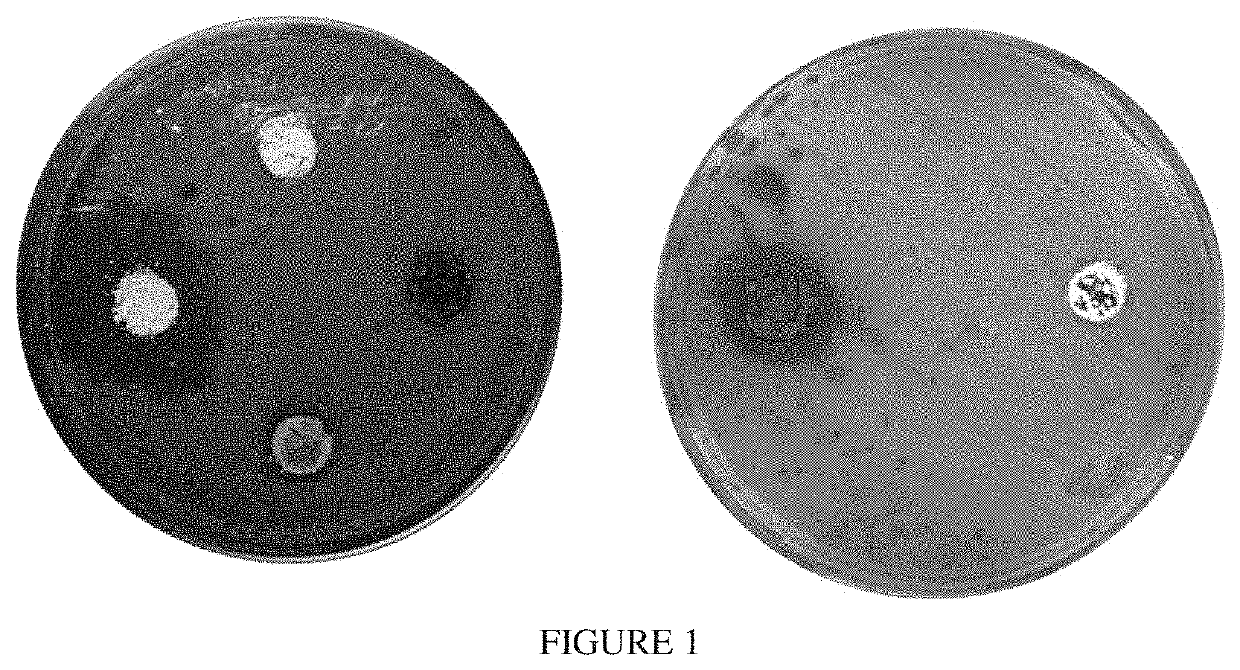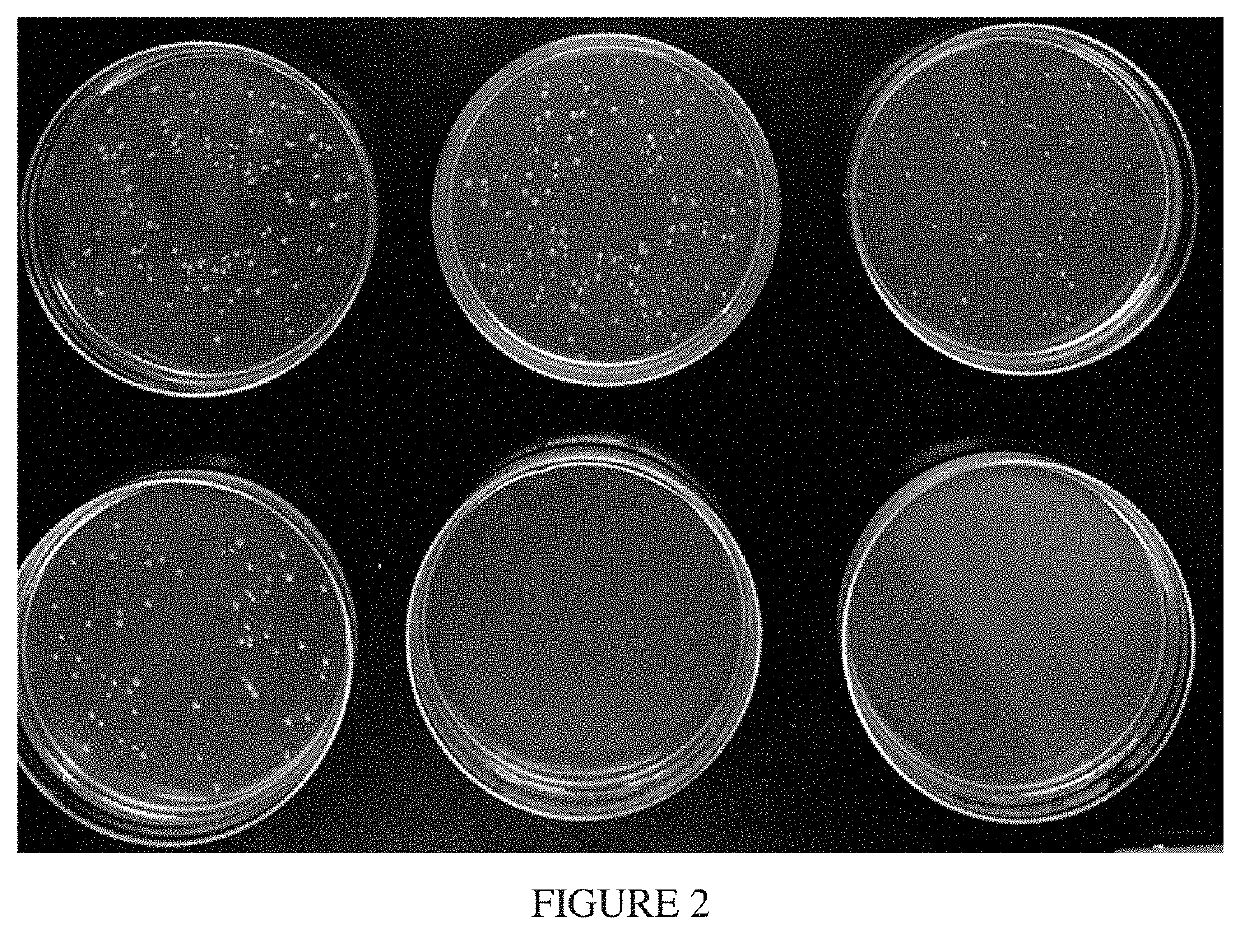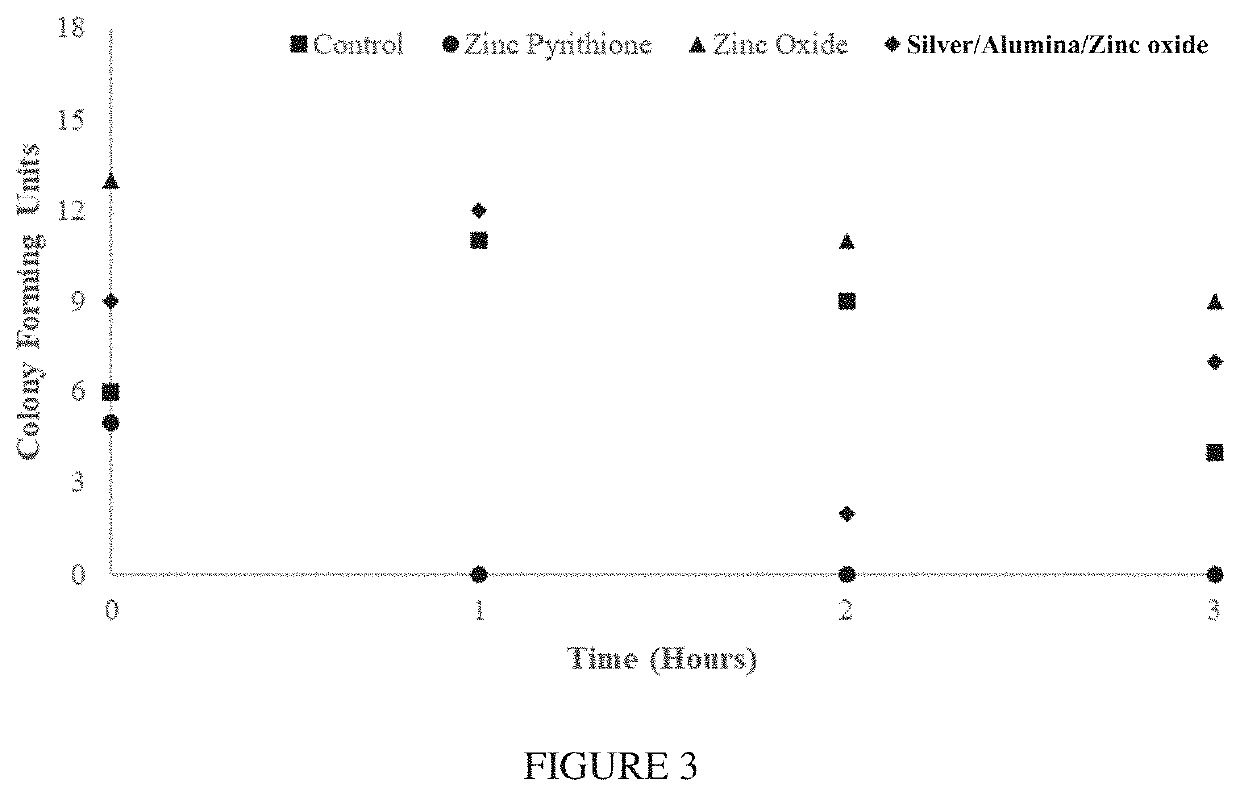Antifoulant marine structures compositions and methods thereof
a marine structure and composition technology, applied in the field of antifoulant compositions, can solve the problems of microorganism-influenced corrosion (mic), blockage or growth, and microorganisms can form harmful biofilms,
- Summary
- Abstract
- Description
- Claims
- Application Information
AI Technical Summary
Benefits of technology
Problems solved by technology
Method used
Image
Examples
example 1
Preparation of Antifoulant Compositions Comprising Polymers
[0340]The instant example describes preparation of antifoulant compositions comprising an antimicrobial composition and one or more polymers.
[0341]Various antimicrobial compositions were utilized, including zinc (44 micron, Belmont Metals, 8024A), zinc oxide (44 micron, ZoChem, ZOX-800), and zinc pyrithione (5 micron, TCI, M0633). Furthermore, a combination of silver (CAS 7440-22-4), alumina powder (CAS 1344-28-1), and zinc oxide (CAS 1314-13-2) was also utilized as an antimicrobial composition.
[0342]The antimicrobial composition and polymer were incorporated directly in the manufacturing process. This provides an advantage as an external coating was not necessary and also allows for a larger matrix which will hold greater amounts of antimicrobial composition and increase the lifespan of the biofilm protection. For the instant example, high density polyethylene (HDPE) was used as the exemplary polymer and rotational molding ...
example 2
Preparation of Antifoulant Compositions Comprising Composite Materials
[0345]The instant example describes preparation of antifoulant compositions comprising an antimicrobial composition and one or more composite materials.
[0346]Various antimicrobial compositions were utilized, including zinc (44 micron, Belmont Metals, 8024A), zinc oxide (44 micron, ZoChem, ZOX-800), and zinc pyrithione (5 micron, TCI, M0633). Furthermore, a combination of silver (CAS 7440-22-4), alumina powder (CAS 1344-28-1), and zinc oxide (CAS 1314-13-2) was also utilized as an antimicrobial composition.
[0347]The antimicrobial composition and composite material were incorporated directly in the manufacturing process. This provides an advantage as an external coating was not necessary and also allows for a larger matrix which will hold greater amounts of antimicrobial composition and increase the lifespan of the biofilm protection. For the instant example, fiberglass was used as the exemplary composite material a...
example 3
Antimicrobial Testing—Cytotoxic Potential (ASTM F895)
[0349]The instant example evaluated various antimicrobial compositions for cytotoxic potential. Briefly, ASTM F895 is a test method useful for assessing the cytotoxic potential of new materials and formulations and as part of a quality control program for established medical devices and components. Qualitative results of the potency of various antimicrobial compositions were evaluated using this test method.
[0350]Antimicrobial compositions including zinc, zinc oxide, zinc pyrithione, and silver / alumina / zinc oxide were poured into several wells that had been punched into inoculated agar. The testing wells were then compared to one another based on the zone of inhibition of cell or spore growth created for each well. Petri dishes were place in an incubator at 78° F. for 24 hours. The zones of inhibition around each well were then compared and the best two antimicrobial compositions from this example were utilized in subsequent testi...
PUM
 Login to View More
Login to View More Abstract
Description
Claims
Application Information
 Login to View More
Login to View More - R&D
- Intellectual Property
- Life Sciences
- Materials
- Tech Scout
- Unparalleled Data Quality
- Higher Quality Content
- 60% Fewer Hallucinations
Browse by: Latest US Patents, China's latest patents, Technical Efficacy Thesaurus, Application Domain, Technology Topic, Popular Technical Reports.
© 2025 PatSnap. All rights reserved.Legal|Privacy policy|Modern Slavery Act Transparency Statement|Sitemap|About US| Contact US: help@patsnap.com



